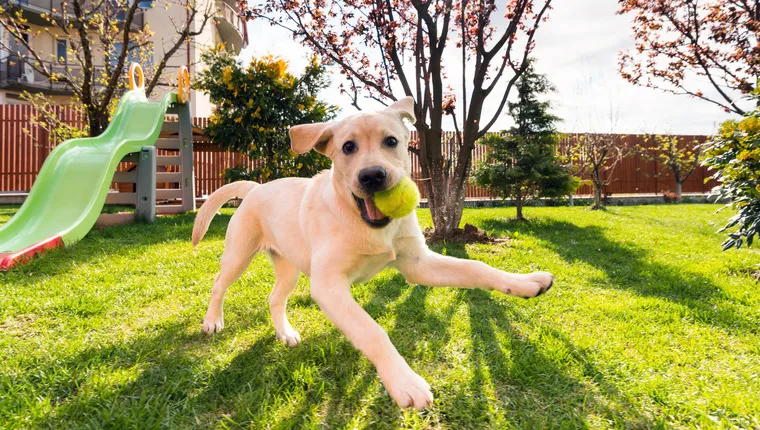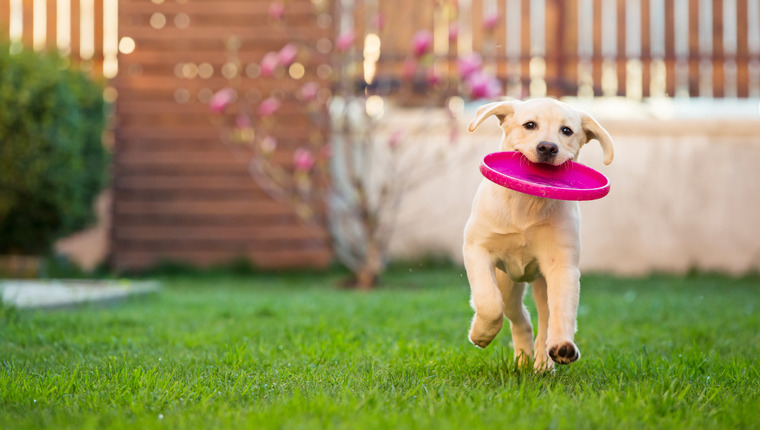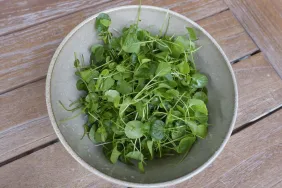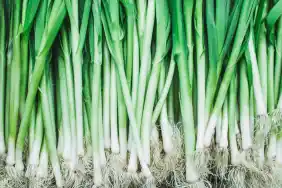
For any dog owner, spending time with your dog outside is one of life’s little pleasures. Whether you’re playing with a ball or a toy or simply enjoying the sun, you can have a great time in the garden with your pup.
But, there are some garden dangers to be aware of – they can make your dog sick or cause an accident. From poisonous plants to pools, fountains, and ponds, it’s important to be aware of the risks to your furry friend. Here are some of the most common garden dangers for dogs.
Poisonous plants and flowers
Some of the most common plants and flowers we see in gardens and yards are actually poisonous for dogs – and sometimes humans too. They include hydrangeas, water hemlock, poison ivy, foxglove, tulips, daffodils, and chrysanthemums.
There are a number of common symptoms of plant poisoning in dogs – if your dog has ingested a poisonous plant, you’re likely to see at least one or two of these symptoms. But, if you think that your dog has eaten a poisonous plant, don’t wait for symptoms to appear. Instead, take them to the veterinarian as soon as possible.
- Vomiting
- Drooling
- Diarrhea
- Tremors
- Pain
- Difficulty breathing or swallowing
- Seizures
- Abnormalities in heart rhythm
- Heart failure
Before planning your garden, check out our guide to the worst plants for pet owners.
Pesticides and fertilizers
Many people use pesticides and fertilizers when caring for their gardens, but they can be harmful to dogs, as PetMD explains. If a dog ingests one it can be dangerous – and likewise, they can cause skin irritation. If you think that your dog has ingested a pesticide or fertilizer, or is showing any of the below symptoms, it’s important to get them to a vet as soon as you can.
- Vomiting
- Drooling
- Diarrhea
- Rapid breathing or difficulty breathing
- Confusion or lethargy
- Tremors
- Skin irritation/rashes/burns
- Dilated pupils
- Pawing at eyes or face
- Seizures
Garden tools and equipment
Garden tools and equipment might not be poisonous, but they can certainly hurt your dog. Often, tools will have sharp edges that can be dangerous, or be heavy and could fall on your dog and hurt them. And then there’s electrical garden equipment – this could harm your dog too.
Dogs can get cuts from sharp tools. Meanwhile, with tools like chainsaws, they could be at risk of even more serious injuries. Electrocution is a concern when it comes to electrical tools and equipment too, while your dog can also burn themselves on garden tools.
It’s best to keep tools and other pieces of equipment securely locked away when you’re not using them. It could save your pups’ life, or at least an expensive trip to the vet.
Pools and fountains
Many dogs enjoy spending time in and around water, but it can be dangerous, too.
Dogs can drown in garden pools and ponds – even if they enjoy and are used to being in water, it’s just not worth the risk.
There’s also a risk of infection when it comes to bodies of water in the garden. Dogs can get leptospirosis, pythiosis, giardiasis, and cryptosporidiosis, among other infections, through playing in ponds and pools.
And then there’s blue-green algae. Also known as cyanobacteria, blue-green algae can be harmful to dogs (and humans) if they come into contact with it. It can cause vomiting, diarrhea, liver and kidney problems, breathing difficulties, and effects on the heart and blood pressure.
Wildlife and insects
Insects and other wildlife often found in gardens and yards can be harmful to dogs. Your dog might get ticks – tiny arachnids that feed on blood – or get stung by bees or wasps in the garden. Ticks can spread conditions like Lyme disease, a bacterial infection that affects dogs as well as humans.
Aside from insects, animals like snakes can be harmful. There are a number of venomous snakes in the USA, and snake bites can cause serious health issues, or potentially death.
While there are a number of potential risks in the garden – including these common garden dangers for dogs – it’s not too difficult to keep them safe. Be sure to keep any tools and equipment out of reach, supervise your pup around any bodies of water, and keep an eye on the plants and wildlife around your garden. And, if in doubt, it’s always best to consult a veterinarian.
Eager to get outside with your pup this spring? Check out our top tips for keeping your yard pet-friendly, and our gardening safety tips.









